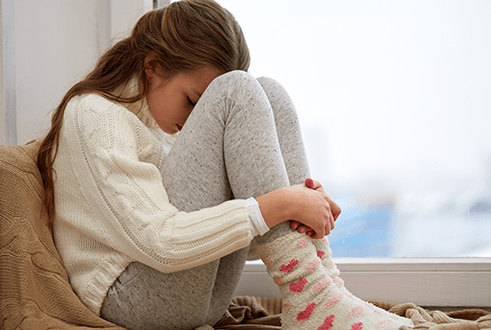 Childhood separation anxiety is a normal development state for children between 8 to 14 months old. These children tend to be clingy and afraid of strangers and unfamiliar places.
Childhood separation anxiety is a normal development state for children between 8 to 14 months old. These children tend to be clingy and afraid of strangers and unfamiliar places.
How to Ease Childhood Separation Anxiety
If you understand the copying strategies outlined below, you can relieve childhood separation anxiety. It is expected to fade as your child grows older.
You can take the following steps to ease the process of the "normal" separation anxiety:
- Practicing Separation: Practice separation by leaving your child for a short time and distance. As time goes, move further and take a longer time before returning.
- Leaving Without Fanfare: When you bid your child goodbye and tell him or her that you will return, go and do not stall or make it a bigger deal
- Keeping Your Word of Return: Ensure that you return at the time you promised to do so. This will make your child confident that he or she can handle separation.
- Scheduling Separation Feedings and Naps: Ensure that your baby is full before leaving his or her sight.
- Familiarizing with New Surroundings: try to make new environments familiar to your child. For instance, you can request the baby sitter to come to your house or encourage your child to carry familiar objects when they are away from home.
- Minimizing Scary Television: You should expose your child to watching television shows that are not frightening to avoid frightening them.
- Having a Consistent Primary Caregiver: This makes you avoid inconsistencies in your kid's life
If childhood separation anxiety intensifies or persists such that it interferes with your child's school, playing with other children, and other activities, he or she may be having a separation anxiety disorder. For instance, if a 7-year-old child experiences this fear, it is intense and last longer—even up to one month. Such a child is said to have separation anxiety disorder.
What is Separation Anxiety Disorder?
A child suffering from separation anxiety disorder becomes nervous and fearful when he or she is away from home or is separated from those he or she is attached to, such as parents, caregivers, or siblings.
Symptoms of Separation Anxiety Disorder
Some children suffering from separation anxiety disorder tend to develop the following symptoms at the thought of being separated: Headaches and Stomachaches.
The major symptoms of separation anxiety disorder include:
- Complaining about headaches and stomachaches on school days
- Clinging to the caregiver
- Bed-wetting
- Fear of being alone
- Recurring temper tantrums
- Nightmares about being separated
- Unrealistic thought that something terrible might happen to loved ones or the child if he or she leaves them
- Refusing to go to school to stay with the loved ones
- Refusing to go to bed without the loved ones being nearby
- Nightmares about being separated
Common Causes of Separation Anxiety Disorder
From the above symptoms, you can infer the causes of childhood separation anxiety disorder. By knowing the root causes of the condition, you are one step ahead towards helping your child overcome their struggles.
Common causes of separation anxiety disorder include:
- Insecure attachment
- An over-protective parent
- Change in environment
- Stress
Treating Separation Anxiety Disorder
There are several treatments plans for separation anxiety disorder. The main tip is that if you intervene and seek professional help early enough, your child will experience a positive outcome faster. You should find a psychiatrist who has specialized in children and adolescents.
Various types of psychotherapy can effectively treat this condition, including the following:
- Cognitive Behavioral Therapy (CBT): CBT is the primary type of psychotherapy that is recommendedfor treating the condition. This therapy enables children to learn how they can recognize anxious feelings and thoughts, making them react calmly towards them. They use various techniques to learn strategies for managing their thoughts and emotions.
- Family Therapy: Beloved ones are incorporated into the treatment process to improve the treatment outcomes of the child. Siblings and parents learn ways of interacting with the child and tease behavioral patterns. They may also learn various strategies that can help the child overcome anxiety spikes
- Play Therapy: Younger children may have challenges relating to feelings, thoughts, and actions. Play therapy can be useful for such children as it helps them process and demonstrates their feelings and emotions, hence learning to cope up with them.
Get Started
It is normal for your young child to be anxious when you bid them goodbye. Even though its effects can be frightening, separation anxiety is a normal developmental stage. Childhood separation anxiety may require professional treatment if it goes overboard, but you can do a lot to help you make your child relax and feel safer. Either way, it is better to consult a professional to ensure that your child experiences the best possible outcome. For more information on childhood separation anxiety and childhood separation anxiety disorder, do not hesitate to contact us. Our experts are always willing and happy to serve you.
References
https://www.webmd.com/parenting/separation-anxiety#1
https://www.helpguide.org/articles/anxiety/separation-anxiety-and-separation-anxiety-disorder.htm/
